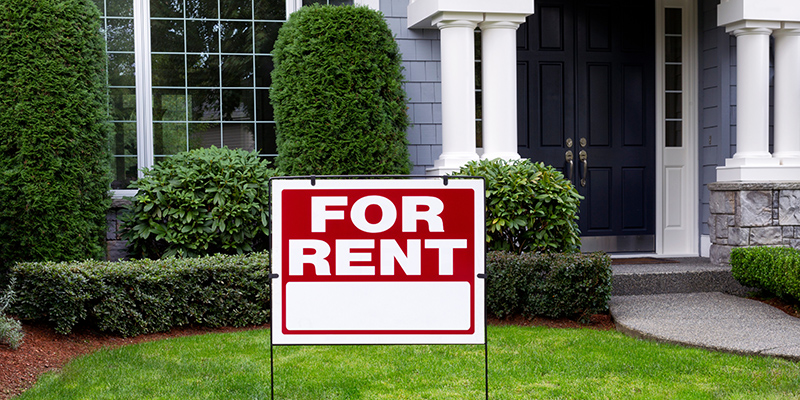It is often difficult for landlords to figure out how to determine rent price. But, there are some strategies you can utilize to arrive at the right rental rate.
How to Determine Rent Price for a House, Apartment, or Condo
For many owners, it makes more sense to put up a property for rent instead of selling it. Renting out a property allows you to earn money on a monthly basis. It is also typically easier to find a tenant than to find a buyer who will actually commit to the sale.
But, renting out a property takes more work than one might think. Sure, finding tenants, maintaining the property, and collecting rent are difficult. Before you can do all that, though, you must first decide how much to charge in rent. It is not like you can simply pick an arbitrary amount and go with it. There is a correct way to go about the art of setting rent.
To help you get started on managing your rental property, here’s how to determine rental price:
1. Check State Laws
Even if you wanted to set just any amount as your monthly rental rate, some state laws won’t allow it. As such, the first thing you must do when learning how to determine how much to charge for rent is to check your state and local laws.
For instance, New York is quite known for its rent control laws, particularly in New York City. California also recently enacted AB 1481, also known as the Tenant Protection Act of 2019, which imposes statewide rent caps.
Landlords must familiarize themselves with the different rent control laws that apply to their rental units. In doing so, they can avoid breaking the law and incurring potential liability.
2. Find Out How Much Your Home Is Worth
The next agenda on the list is to understand the value of your home. Keep in mind that this is not necessarily the amount you initially paid to buy it. Home values can fluctuate depending on a number of factors, including time. Therefore, if some time has passed from when you first bought the home, there is a good reason to believe it no longer has the same worth.
To find out how much your home is worth, you can use websites like Zillow to arrive at an estimate. But, if you can swing it, it might be better to hire a professional to appraise your home more accurately. The appraiser will conduct an overall inspection of the home, factoring in location, sale prices of similar homes in the area, and the condition of the home.
3. Calculate Based on a Percentage
After getting an idea of how much your home is actually worth, a good rule of thumb is to calculate rent based on a percentage. Generally, rental rates are between the range of 0.8% to 1.1% of the home’s market value. As an example, if your home is worth $250,000, you could charge around $2,000 to $2,750 per month.
4. Consider Profitability and Affordability
The percentage rule is not the gold standard. Landlords also have to consider other things, such as profitability and affordability.
For instance, if your home’s market value is below $100,000, you might charge $800 to $1,100 based on the percentage rule. But, that might not be enough to cover property management expenses. On the other hand, if your home’s market value is above $350,000, charging $2,400 to $3,300 might be too expensive. Thus, you might scare away potential tenants.
Overall, you have to make sure your rental property is both affordable and profitable. You can calculate profitability by using the gross rent multiplier formula. What is a gross rent multiplier? It is a metric used to determine the profitability of a property compared to similar properties in the area. To calculate this, you take the price of the property and divide it by the gross rental income.
5. Think About Demand
 If you know anything about the law of supply and demand, then you know that demand can significantly affect prices. This applies to the rental property market, too.
If you know anything about the law of supply and demand, then you know that demand can significantly affect prices. This applies to the rental property market, too.
For instance, if the economy is bad, more people are likely to rent homes than buy them because they can’t afford them. Thus, demand is higher. If demand is high, you have more room to charge a higher rental rate. Though, it is important to keep in mind that smaller and cheaper rentals also tend to find tenants more quickly during a bad economy.
Conversely, if demand is low, then landlords have to adjust accordingly. Not a lot of people are renting, so there may be an oversupply of rental homes. This means you have to get competitive and set a lower rental rate to avoid a long vacancy period.
6. Research Other Rentals in the Area
In addition to considering everything listed above, it is equally important to account for fair market rent. To learn how to determine fair market rent, you must take a look at similar rentals in your area and how much they are charging.
If you are charging $2,200 for a one-bedroom apartment but your neighbor is charging $200 less for the same type of apartment, tenants are more likely to go for your competition. A good way to find out how much other landlords are charging is to check websites like Craigslist and Trulia.
7. Factor in Expenses
When it comes down to it, your goal as a landlord is to earn a profit. But, you can’t do that if what you’re charging doesn’t cover the property’s expenses. What expenses should you consider?
- Maintenance and repair costs
- HOA dues
- Property management fees
- Taxes
If you still have a loan on the house, you also have to make sure your rent is at least equal to your monthly mortgage. Otherwise, your rental will only bleed you dry.
8. Take Amenities Into Account
Amenities are highly sought after by many tenants. In fact, some tenants even specifically look for properties with certain amenities in mind. As such, when learning how to determine how much rent to charge, you may be able to up your rent a bit more than others if your property has amenities.
Not all amenities can influence rent, though. Some amenities are more attractive than others. If you have the following amenities on your rental property, you can increase the rent you charge by 3% to 15%.
- Swimming pools
- Gyms
- Washer and dryer
- Dishwasher
- On-site parking
But, just because these amenities can add to the value of your property doesn’t automatically mean you should have them installed. Remember that added amenities come with added maintenance costs.
How to Determine Rent Price for a Room
Sometimes, a property owner may not want to rent out the entire home. This is the case for owners who are also living in their home and would only like to earn some extra income. To rent out a room, it is important to consider the following factors:
- Monthly mortgage payments (if applicable)
- Expenses (maintenance, utilities, HOA dues, etc.)
- Similar rooms for rent in the area
- Amenities
The Importance of Setting the Right Rent Price
On your journey to becoming a landlord, learning how to determine rent price is a crucial step to take. You can’t just set an amount you want and call it a day. This trial-and-error approach to setting your rental rate can only lead to massive losses, long vacancy periods, and even potential liability.
For landlords who don’t want to set their own rental rates, it is imperative to hire someone with experience to do it for them. Start your search for the best property management company today using Rental Choice’s online directory.
RELATED ARTICLES:
- Are You Charging A Fair Rental Rate?
- Late Rent: Creating Late Rent Notices And Assessing Fees
- Is Renting Or Selling Your Home During The Holidays A Good Idea?





 Company
Company